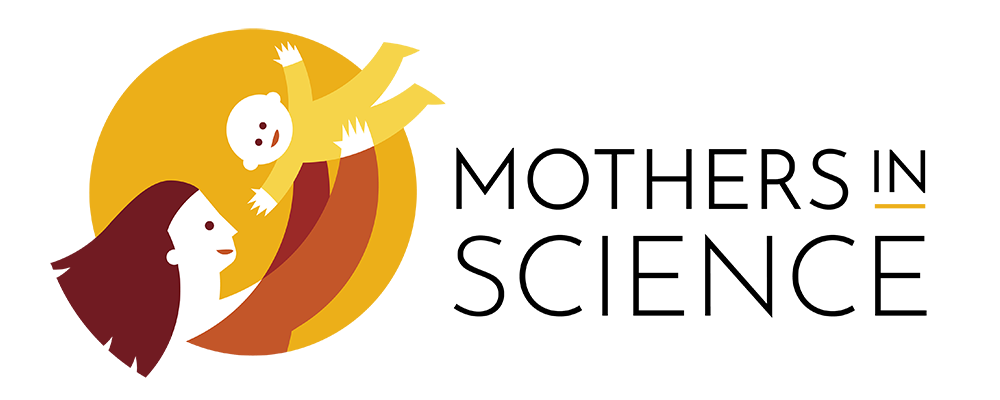Sripriya Murthy
Sripriya Murthy is a postdoctoral researcher studying autoimmune skin disorders at the University Hospital Schleswig-Holsetein (UKSH) in Germany and a mother of one. In an interview with our team, she shares her career aspirations and gives insightful advice on how to overcome the challenges of combining motherhood and an academic career.
1. What do you aspire to accomplish in your career and why?
I’m a postdoctoral scientist working on autoimmune skin disorders in Germany. One of my aspirations is to lead my own research group as a professor. I envision creating an environment that fosters curiosity, collaboration, and innovation. While my passion for research and teaching are the driving forces, I hope to inspire and mentor others, particularly women of color and mothers, in the field of science. Through these efforts, I hope for a more equitable and diverse scientific landscape, ensuring that everyone, regardless of background, can excel and contribute to the advancement of knowledge.
2. What do you consider to be your most important career achievement or milestone?
One significant milestone in my career involves working on projects focused on studying the effects of various drugs on autoimmune skin disorders. Extending this research beyond the laboratory setting via active collaborations with other research institutions, presentations at conferences, and publications in peer reviewed journals has helped bridge gaps in understanding the mode of action of various therapeutic treatments currently used to treat patients today. The research, though rooted in basic science, lays the groundwork for future developments in the field of therapeutic targets for autoimmune skin diseases.
3. What career obstacles have you faced as a mother in STEMM? How did you overcome them?
One significant career obstacle I encountered as a mother in science was the impact of my maternity leave on my research trajectory. While officially, I was on leave for six months following the birth of my child, the ripple effect of this period extended beyond that timeframe resulting in a substantial loss of research time. Despite careful planning and attempts to delegate responsibilities, the practicalities of pregnancy, and later, motherhood, limited my active involvement in certain experiments. Contending with the subsequent delays and setbacks, re-establishing a research routine, catching up on missed opportunities, and mitigating the consequences of this ‘’hiatus’’ has been an ongoing process. This experience has heightened my awareness of the systemic barriers faced by researchers, especially those balancing familial responsibilities. Thankfully, my current colleagues are supportive of my new role as a parent and the time limitations that come with it, and are willing to step in and support my research whenever necessary.
4. What was the best professional or personal advice you’ve ever received?
The best advice I've ever received is a simple yet profound principle that has shaped my approach to personal and professional growth: "If you are the most intelligent person in the room, you are in the wrong room." Engaging with people who possess different expertise, backgrounds, and viewpoints has broadened my understanding and helped me strive for continuous improvement. In both personal and professional contexts, I've applied this advice by actively seeking mentorship, collaborating with colleagues from diverse backgrounds, and participating in communities that encourage continuous learning. It serves as a reminder that our greatest opportunities for growth often lie in the company of those whose strengths complement our own, and who, through their unique qualities, inspire us to reach new heights.
5. How did Mothers in Science (MiS) help you professionally and/or personally?
Parenthood, especially while navigating a busy career, can be isolating. MiS provided a safe space where I could connect with other mothers in STEMM, and listen to their stories, fostering a sense of community and shared understanding. It was reassuring to discover that the hurdles I faced were not unique to my experience, and that many others within the scientific community were grappling with similar challenges. What has been particularly eye opening, thanks to MiS, is the realization that, despite the new responsibilities and time constraints that come with parenthood, our shared commitment to research remains unwavering, with parents in science not only navigating the complexities of parenthood but also continuing to publish as much, if not more than before.
6. What advice would you give to a mother in STEMM?
Acknowledge the phases of motherhood: Understand that motherhood is a journey with distinct phases with both challenges and rewards. Avoid comparing yourself to others who might be in different phases of parenthood by recognizing that your journey is unique, and it's okay to progress at your own pace.
Open communication with your partner: Where applicable, engage in an open and honest discussion with your partner about your professional priorities and how you envision balancing work and family life. Establishing a supportive partnership at home is crucial for navigating the demands of both motherhood and a scientific career.
Discuss work priorities with colleagues: Have an open conversation with your colleagues about your priorities and the potential challenges you may face given your new role. Building a network of understanding colleagues is essential for creating a work environment that accommodates the diverse needs of individuals in different life stages.

